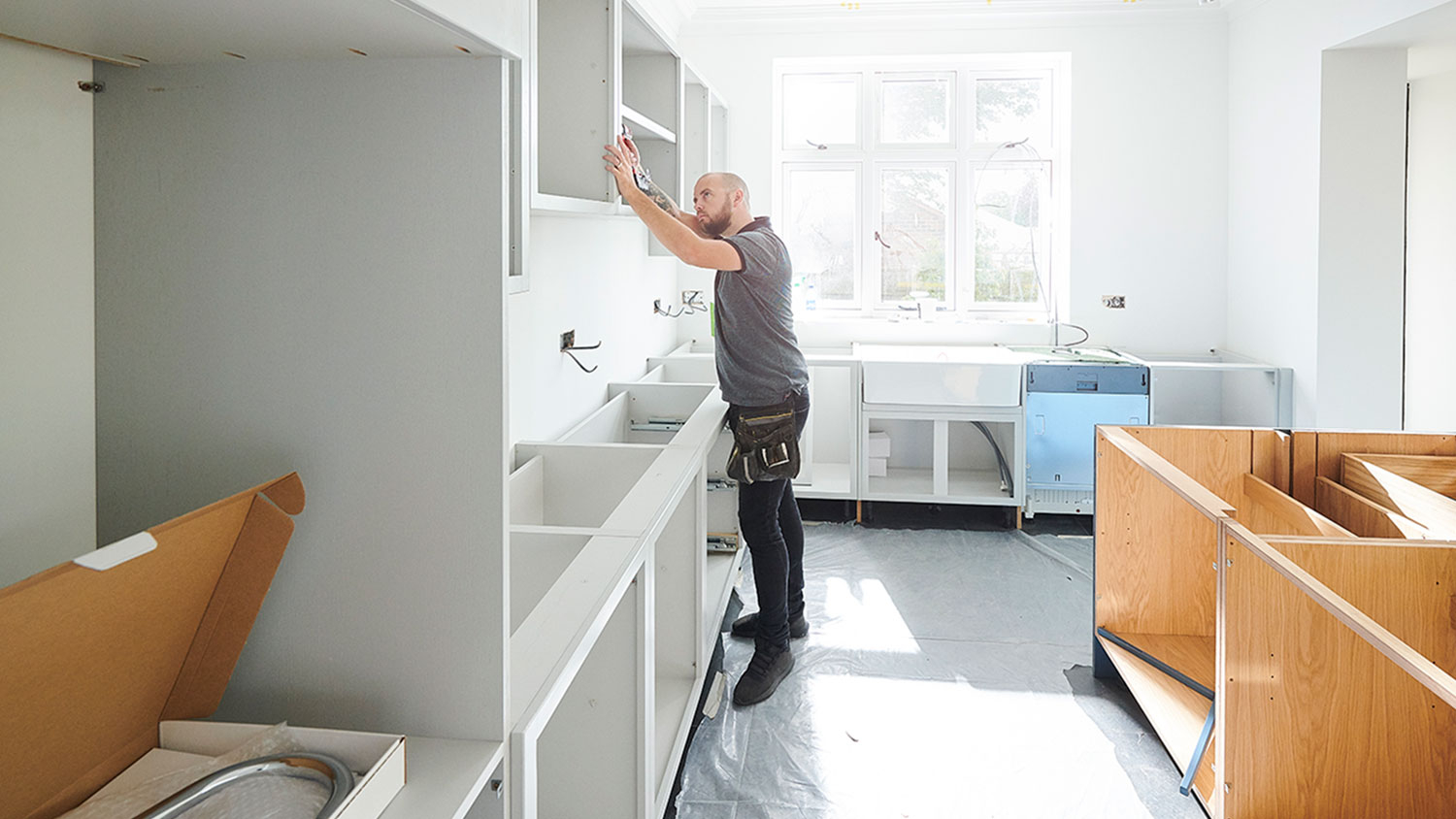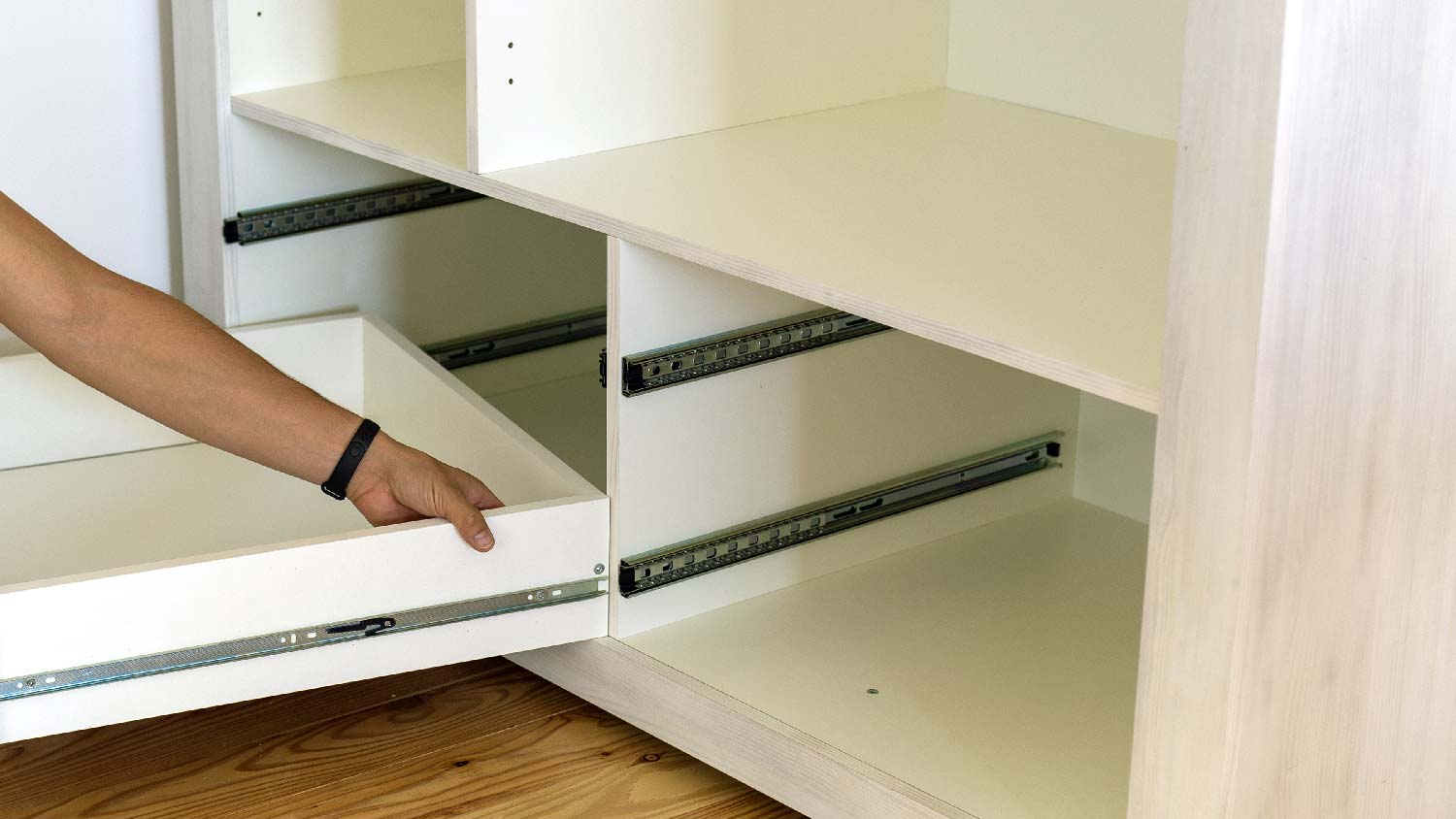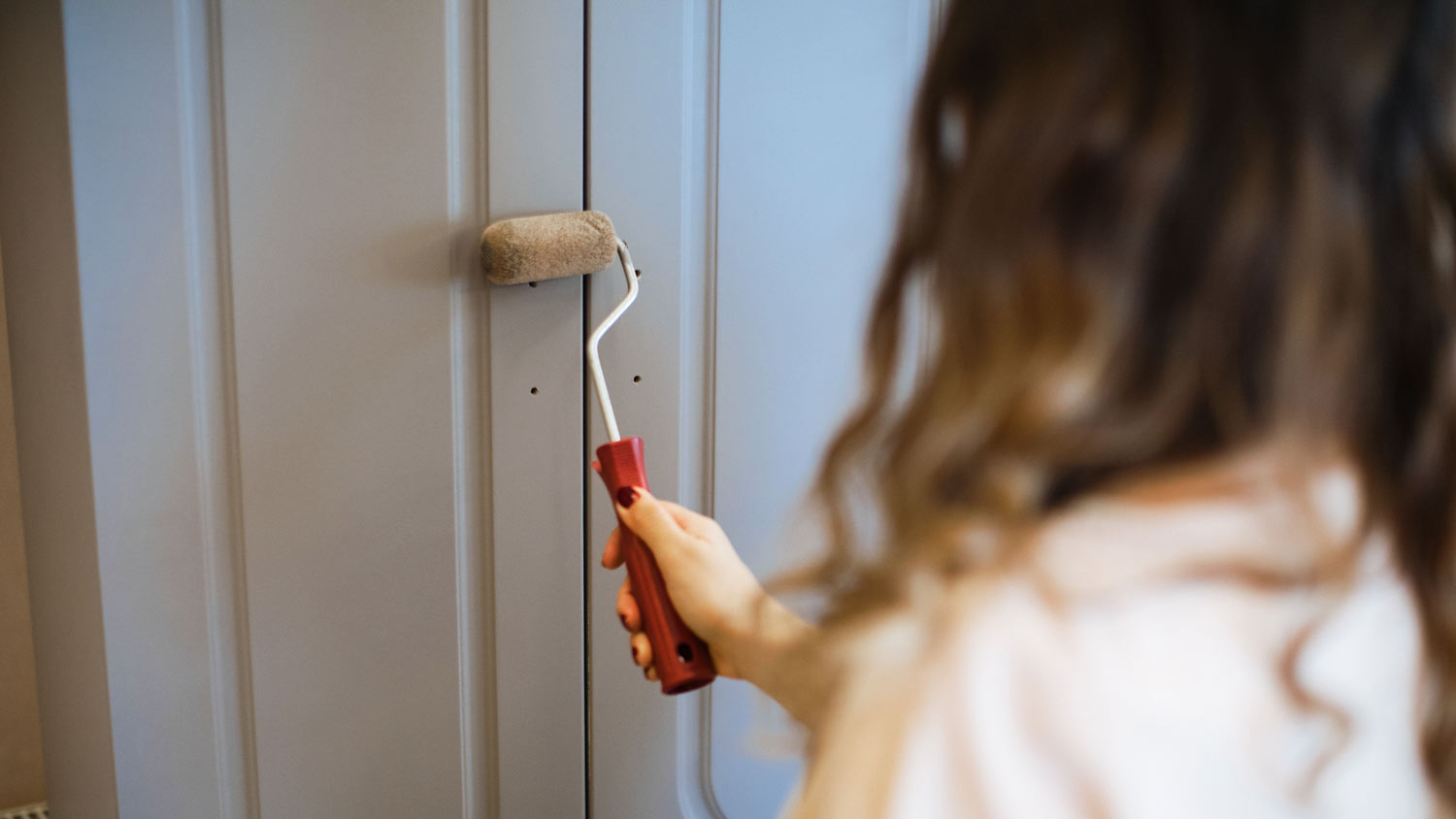
Discover cabinet installation cost estimates, including average prices, key cost factors, and tips to save on your new kitchen or bathroom cabinets.
Remove any drawer any time for any reason


All cabinet drawers come equipped with one type of drawer slide or another. While replacing some drawer types is relatively simple, it’s worth learning how to remove cabinet drawers for the types that are downright baffling until you learn the drawer's trick. Learning how to remove the most common drawer types will minimize frustration and avoid damaging the drawers or their slides.
Drawers and their accompanying drawer slides come in several types. Older kitchen cabinets may have single or double wooden drawer slides that don’t prevent it from falling out if pulled too far. More modern drawers may include safety devices to keep an entire cabinet from tipping and causing injury or may feature soft-close technology that requires an altogether different kind of drawer slide.
Having so many types of drawers and drawer slides is simply a matter of practicality. Light-duty drawer slides are excellent in their simplicity and ability to handle a light load. These drawers don't need heavy-duty steel runners or anti-tip safety devices like medium and heavy-duty types might.
Different drawer slide types can provide better safety and allow for other technology, such as soft-close drawers. Safety latches ensure that drawers won't fall out unintentionally while anti-tip devices keep us safe by only allowing a single drawer to open at a time, reducing the risk of a cabinet tip-over.

Identifying various cabinet drawer slides usually only requires a simple visual inspection. Looking at the side of a drawer can tell you much about what you need to know to remove it. If there are no visible drawer slides on the sides, looking at the underside can offer more information.
Wood glides are more common on older cabinets but are still on some modern ones, too. There will be either a groove or a rail on each side of the drawer or a single rail on the bottom.
Basic glides are commonly metal but sometimes plastic and consist of a pair of runners on the drawer's sides or a single one on the bottom. Some styles have a pair of wheels near the back of the drawer that fit into rail slots mounted in the cabinet.
Soft-close or safety glides come in a variety of styles. They typically appear in pairs on the drawer's sides and have a small lever that unlocks them from the cabinet.
Heavy-duty glides come in a few different styles. Identify them by noticing a screw and locking mechanism connecting the pairs of rails.
Proprietary glides come in many forms, distinct to furniture and cabinet maker brands. Common attributes are levers or tabs that require depressing to unlock them from the cabinet.

Removing drawers with wooden glides is straightforward but might require some guesswork. Old drawer styles may allow you to pull the drawer straight out, tilt it downward, and lift it out. Other styles will require you to tilt the drawer up and lift it out from toward the back of it. It's easy to try one or the other method first to discover the style. If you feel resistance one way, try the other.
Similar to wooden gliders, drawers with basic metal or plastic glides usually allow you to pull the drawer out, tilt it up, and lift it out. However, some styles could have a safety tab in one or both glides that you must find and depress to allow the drawer to release.
Modern drawers and some older drawers on filing cabinets have a safety mechanism built-in. These are common among soft-close drawers and other modern slides. To remove them, pull the drawer out and find a small plastic or metal lever on each side's slide. To remove the drawer, push down or push up both levers simultaneously with a finger while gently pulling the drawer towards you until it's free of the slides. The levers should move easily in the direction they're supposed to go. If you feel resistance in one way, try the other.
Drawers with stabilizer screws are common in heavy-duty drawers such as filing cabinets and can support a great deal of weight. To remove these drawers, start at the top of the cabinet and work your way down. Remove one drawer before working the next one down to avoid a top-heavy condition that could be dangerous. Pull the drawer all the way out, locate a pair of screws, one on each side, and remove them. There may also be a tab to depress while lifting the drawer free of the slides.
Anti-tip devices typically have a cable attached to the drawer's backside. The device prevents opening more than one drawer in a cabinet at a time. To remove these drawers, start at the top of the cabinet by pulling the top drawer out as far as it will go. Identify the cable that is the safety device and unscrew the fastener that attaches it to the drawer. There may also be other safety glide features to look for, like tabs or levers, similar to the types introduced earlier.
Drawers with proprietary drawer slides come in several forms. Most often, these consist of safety mechanisms such as levers, tabs, or other features that require activation to remove the drawer from a cabinet. Sometimes, the drawer removal requirements are apparent after a quick inspection. Otherwise, the best way to approach removing these types of drawers is to check the manufacturer's instructions for removal.
Having a few tricks up your sleeve makes removing cabinet doors relatively easy. Here are a few tips to make it even easier.
You may have to try one or two methods when discovering how to remove drawers. Remember that you shouldn't run into anything that's physically hard to do in most situations. In other words, you shouldn't have to force anything to get it to move. If you meet resistance, it's a good sign that you should try the next method on the list.
Once you figure out how to remove the drawers from the cabinet, write down the procedure. Writing the procedure directly on the side of the drawer is helpful and convenient for next time.
Before removing all the drawers in a room or even a single cabinet, label each drawer with its corresponding location to make re-installation a snap.
You may need to remove cabinet drawers for any number of reasons. Perhaps you're refacing them to keep renovation prices low by eliminating the cost of new cabinet installation. Or, maybe you're trying to reach something that's fallen into the back of the cabinet.
Whatever the case, if you discover a broken drawer or drawer glide or otherwise have trouble getting the drawers to behave, a local cabinet repair professional can undoubtedly provide the solution. These pros can also help you with any necessary repairs or replacements during their visit.
From average costs to expert advice, get all the answers you need to get your job done.

Discover cabinet installation cost estimates, including average prices, key cost factors, and tips to save on your new kitchen or bathroom cabinets.

Discover the cost to paint kitchen cabinets, including average prices, cost factors, and tips to help you budget and save on your next kitchen update.

Discover the built in bookcase cost for 2025. Learn about price ranges, installation factors, and ways to save on your custom built in bookcase project.

Learn how to replace drawer slides in a few easy steps to replace broken ones or change the appearance of your cabinets.

Picking the right handle or knob isn’t difficult if you know a bit about the most common kitchen cabinet hardware styles.

Do you have a cabinet door that’s banging into walls, appliances, or kneecaps? Here’s how to stop cabinet doors from opening too far with all the best solutions.